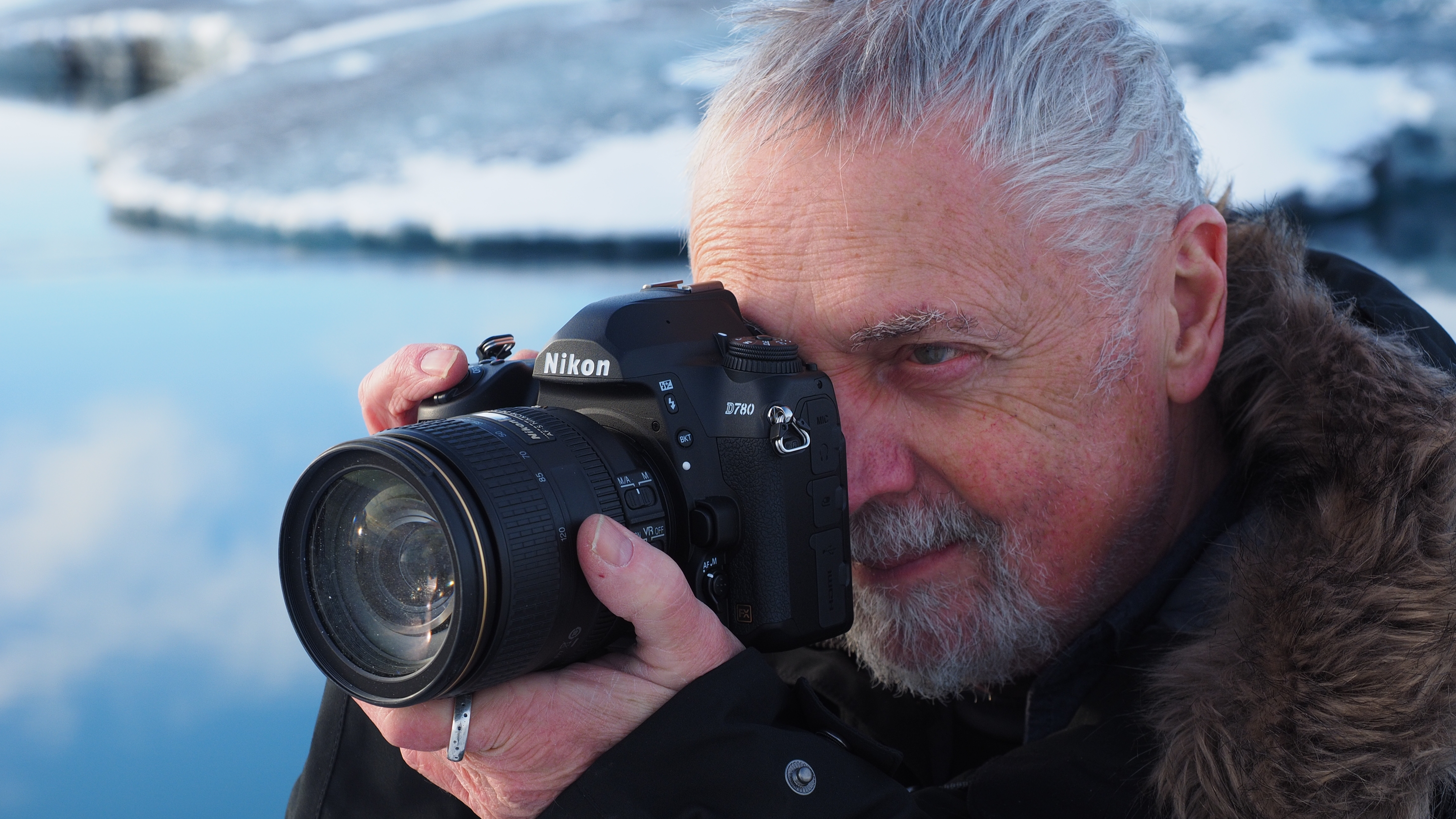Digital Camera World Verdict
The Nubia Z80 Ultra brings an impressively stacked spec sheet to an impossibly low price point. It's incredibly powerful and has a camera system that often punches above its weight. Unfortunately, unpolished software, lacklustre support terms, and inconsistent image processing sour the deal.
Pros
- +
Lovely 35mm main camera
- +
Ultrawide is better than most
- +
Huge battery and fast charging
- +
Awesome for gaming
- +
Great pricing
Cons
- -
The under-display camera is dreadful
- -
Image processing is a little hit and miss
- -
Stability issues when shooting video
Why you can trust Digital Camera World
The Nubia Z80 Ultra is a very unique proposition. It's almost equal parts gaming device and camera phone, and it's absolutely bursting with flagship-level specifications. At the same time, it's priced like an upper mid-range phone, meaning it's incredibly affordable.
With the Snapdragon 8 Elite Gen 5 SoC, a 7200 mAh battery with 80W wired/wireless charging, a massive uninterrupted display, and high-resolution cameras with large sensors, this phone seems like it should cost twice as much. So, what's the catch? Unfortunately, there are a few, but the price point might make it all worthwhile.

Nubia Z80 Ultra: Specifications
Processor | Qualcomm Snapdragon 8 Elite Gen |
RAM / Storage | 12GB+256GB / 16GB+512GB / 16GB+1TB |
Screen | 6.85-inch 144Hz OLED 2688x1216 |
Wide Camera | 35mm 50MP f/1.7 (1/1.3-inch) |
Ultrawide Camera | 18mm 50MP f/1.8 (1/1.55-inch) |
Telephoto Camera | 70mm 64MP f/1.48 (1/2-inch) |
Front Camera | 16MP f/2.0 under-display camera |
Video | Up to 8K30 / 4K120 |
Battery | 7200 mAh / 80W wired + wireless charging |
Operating System | Nebula AIOS 2, based on Android 16 |
Size | 164.5 x 77.2 x 8.6 mm |
Weight | 227 g |
Nubia Z80 Ultra: Price
The Nubia Z80 Ultra starts at just $649 / £579 for the base model, which comes with 12GB of RAM and 256GB of storage. It's also available with 16GB of RAM and 512GB of storage for $799 / £709 or with 16GB+1TB for $899 / £799.
So, despite having plenty of flagship-level specs, the Nubia Z80 Ultra is priced more similarly to upper-mid-range devices like the Xiaomi 15T Pro and Honor 400 Pro. It's particularly impressive that Nubia managed to include the Snapdragon 8 Elite Gen 5 processor at a price like this.
Nubia Z80 Ultra: Design
The Nubia Z80 Ultra has a similar design to the last few Z-series phones. It's a large phone with a boxy design, squared-off corners and a gently rounded frame. In the hand, it reminds me of the Galaxy S24 Ultra, before Samsung flattened out the side rails.
I have the white model in for testing, but it's also available in black or with a wild Vincent Van Gogh-inspired Starry Night mural on the rear. It's nice that there's something for everyone, whether you're looking to blend in or stand out from the crowd. It should be noted, though, that the base model is only available in Black.
It's a hefty phone, with a 6.85-inch screen and weighing in at 220g, but I found it comfortable to use. It should be noted, though, that I have fairly large hands; those with smaller paws may find it difficult to reach the upper portion of the display.
The best camera deals, reviews, product advice, and unmissable photography news, direct to your inbox!
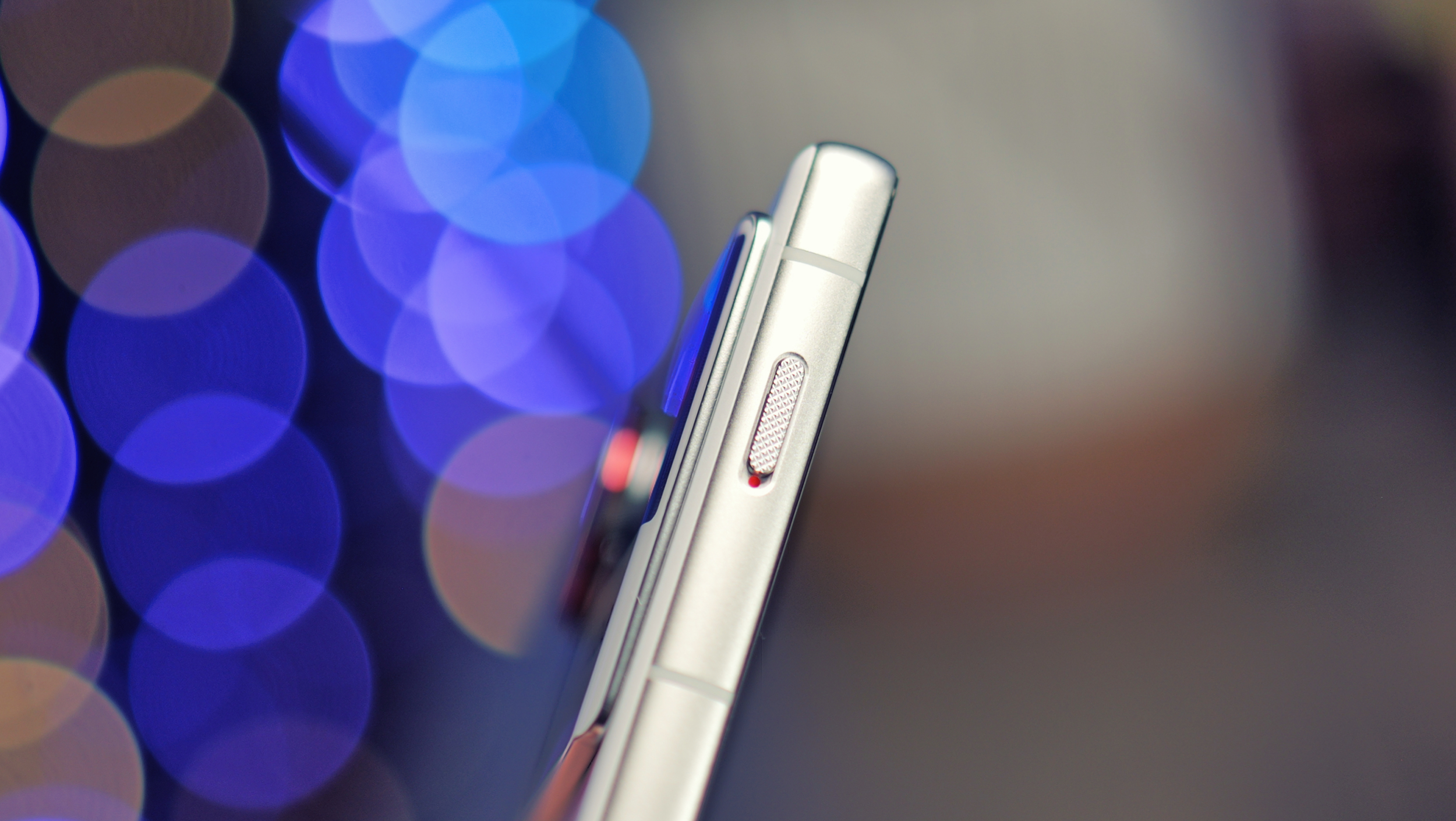
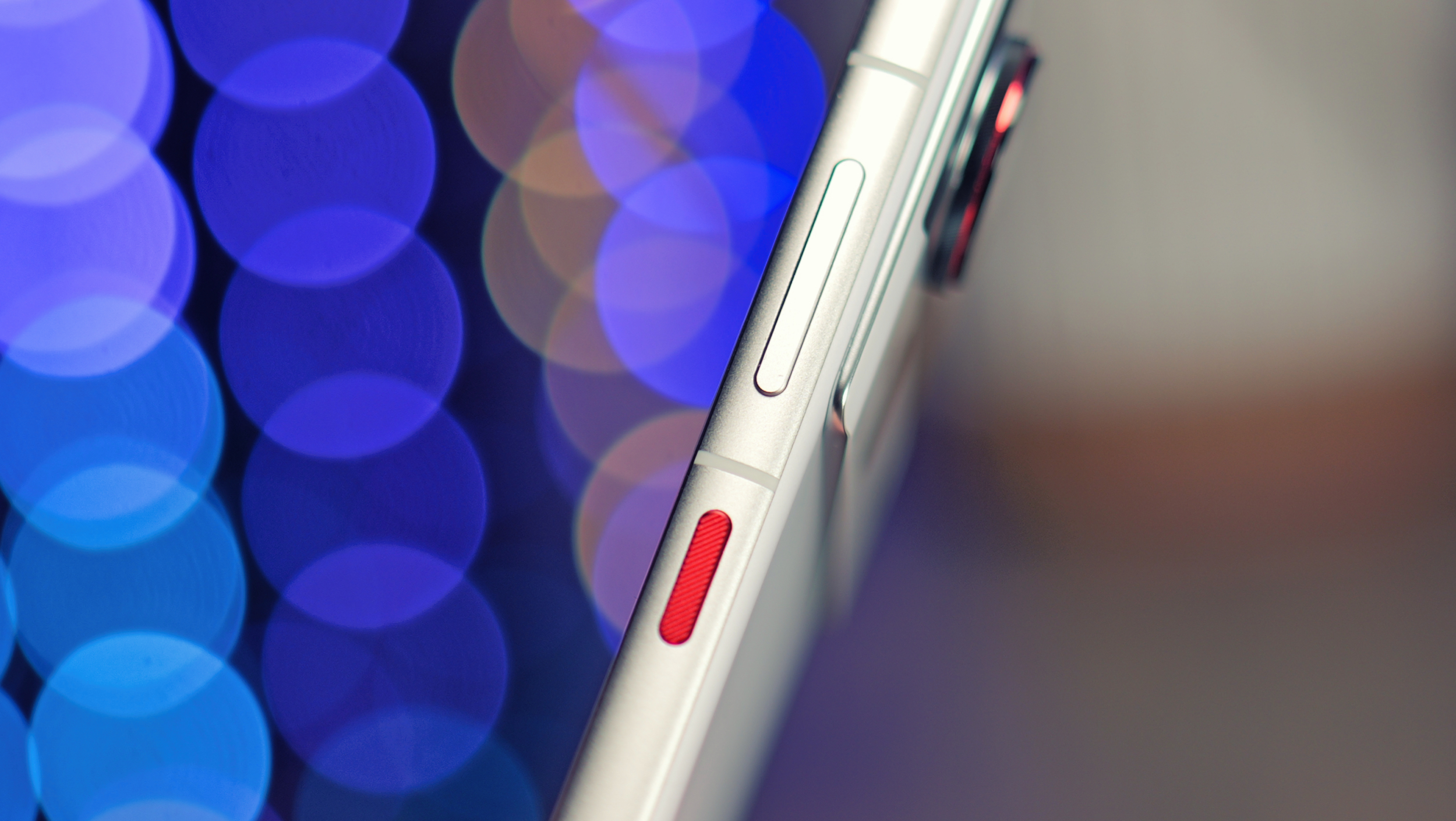

The phone has a customisable sliding switch on the left side, a bit like the slider you'd find on a classic iPhone or OnePlus device. This can be set to open the camera, access the gaming menu, toggle the flashlight, start the voice recorder or switch sound profile. It's a nice tactile addition that I found quite handy.
On the other side of the phone, you'll find the usual power button and zoom rocker, as well as a dedicated camera button. It's very similar to the one on Sony Xperia flagships; it can be half-pressed to focus, and fully depressed to take a shot. Meanwhile, a double click can open the camera, even when the phone is locked.
On the rear, the cameras look like they mean business. Especially the main camera, which stands proud of the camera island with a fairly hefty lens housing. I quite like the look overall; it's quite a unique design, but the camera placement seems a little haphazard. If you're a fan of symmetry, you might not be so into it.
One of the most unusual things about this phone is its selfie camera. It's hidden under the display, and unless you're really looking for it, you could be easily convinced that there's no selfie camera at all. It's a similar technology that previous Galaxy Z Fold devices used, and you get the same thing on Redmagic gaming phones, with which this phone shares some DNA.

It's certainly an impressive feat of engineering, it means you get a wonderful full-screen experience with no notches or cutouts - perfect for gaming or watching movies on your travels. It's quite an odd choice on a camera-focused phone like this, though, as it means the front camera quality is pretty dire - but more on that later.
Elsewhere, the screen specifications are nothing but impressive. There's a super-quick 144Hz refresh rate, 2592Hz PWM dimming to prevent eye-strain and a peak brightness of 2000 nits. The screen also features an ultrasonic under-display fingerprint scanner, which means it'll work well when your hands are slightly moist, and it won't blind you in a dark room.
It's also worth mentioning that the speakers and haptic feedback are very impressive, perhaps also inherited from the Redmagic gaming lineup. I would have loved to see the 3.5mm headphone jack make an appearance, too, but alas, you'll have to rely on Bluetooth or a USB dongle with this one.
The phone has an IP68/69 rating for dust and water resistance, so it'll handle dunks in fresh water, sprays of hot water and dust should cause no issues. If you have adventurous plans, this phone should be able to keep pace.

Nubia Z80 Ultra: Camera Performance
The Nubia Z80 Ultra has a triple camera system on its rear. There's a 50MP main sensor with a 35mm equivalent focal length and a sizable 1/1.3-inch sensor. It's joined by a 50MP 18mm-equivalent ultrawide camera, and that also has an unusually large sensor, it's 1/1.55-inch, rivalling a lot of main cameras. Finally, there's a 64MP 70mm-equivalent telephoto with a 1/2-inch sensor.
Every camera has autofocus, but the ultrawide and telephoto lenses are better for close-up shooting. The ultrawide can focus just a few centimetres from the lens, while the telephoto has a 15cm minimum focus distance. The main camera requires you to back up to around 25cm or so.
Of course, we have that clever under-display camera around the front, and as impressive as it is, unless you're in absolutely perfect lighting conditions, the results are horrible. The preview looks like a Vaseline-smeared webcam from the 90s, and when you snap a picture, extremely heavy processing makes you look cartoonish and unnatural. If you care about selfies, it's safe to say this phone isn't the one for you.
The rear cameras, on the other hand, impressed me quite a lot. Turning the phone around to snap a self-portrait with the main lens, I was stunned by the shallow depth of field and clarity. However, you should know that this phone adds a beautification filter by default, so you'll need to dive into the settings and turn off Intelligent Beauty, unless you want to look highly airbrushed.
The camera loadout reminds me of the Vivo X200 Ultra, one of my favourite phones of 2025. You get the same 35mm main camera, which provides a very natural-looking FOV compared to most phones, which usually hover around the 23mm mark. Plus, you get a very large sensor on the ultrawide camera, so if you need a 23mm-ish shot in low light conditions, you should be able to crop into the ultrawide slightly and still get good results.
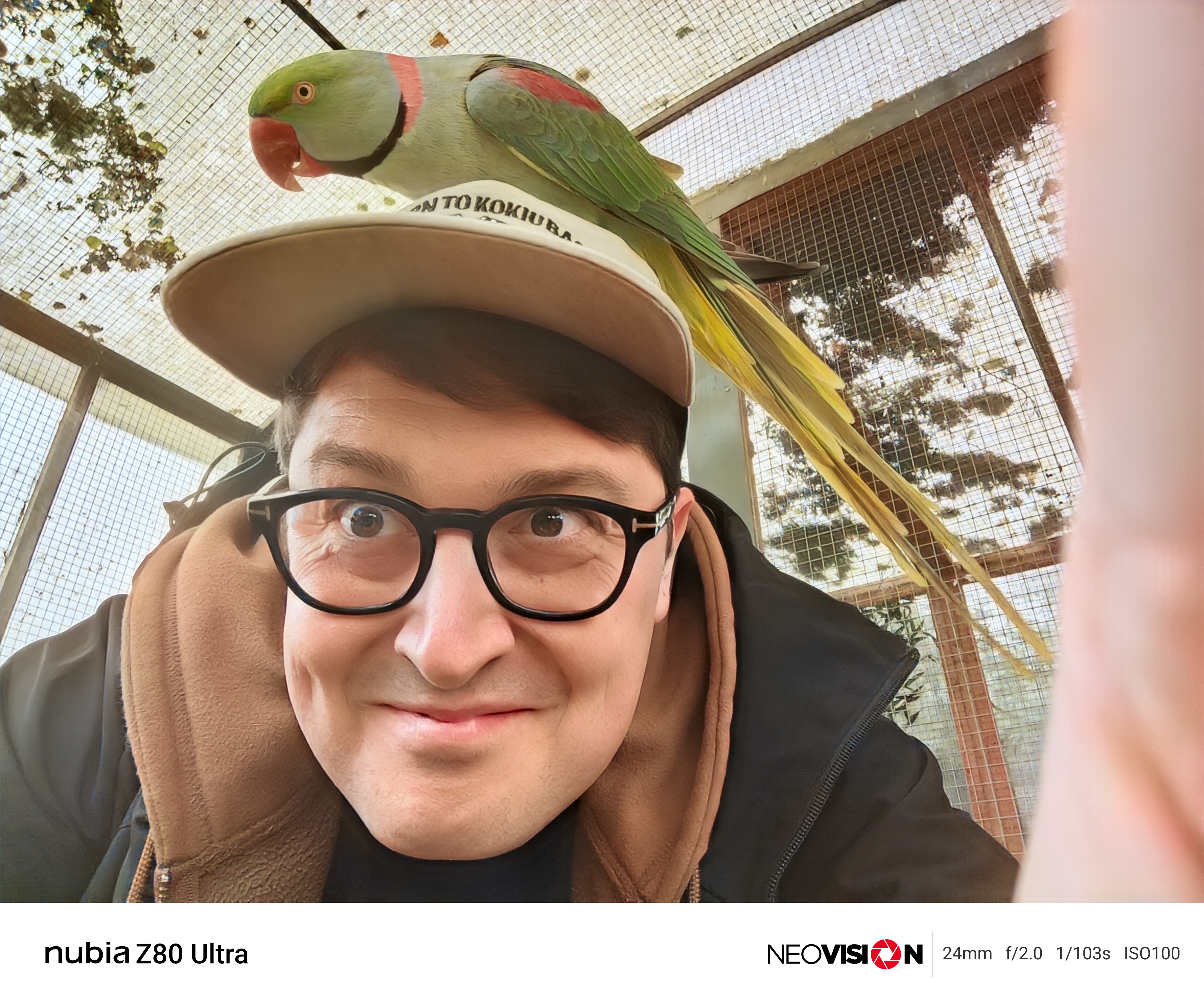
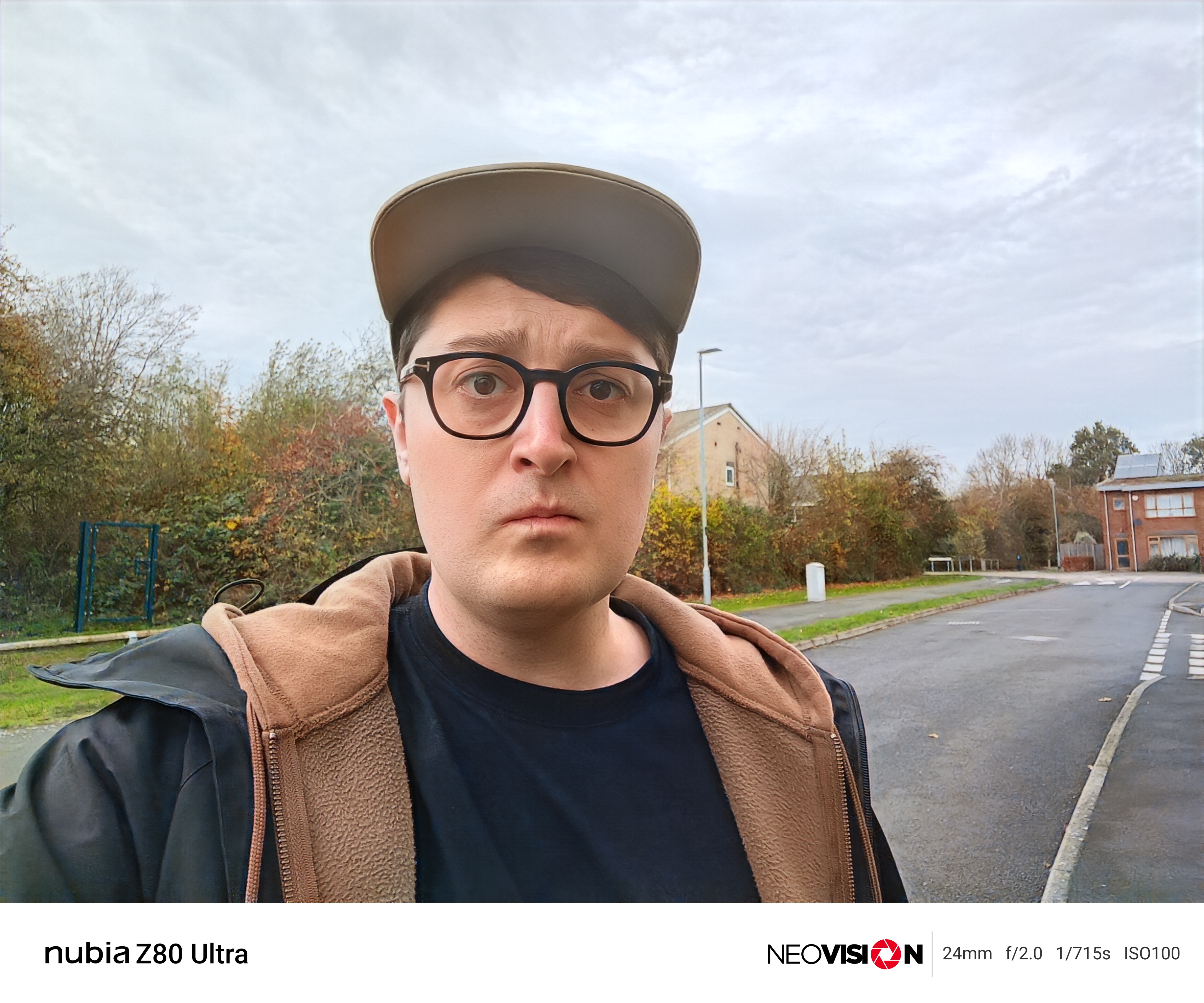


The handling of the telephoto lens is quite strange. The camera app defaults to an 85mm focal length, but it's actually a 70mm lens. Unless you play around with the settings, you might be fooled into thinking it's 85mm-native.
I'm in two minds about this. 85mm is one of my favourite focal lengths, so I have no complaints about shooting like that, but it also means you're not getting the absolute best quality from the camera by default, as the slight digital crop degrades the image quality. Regardless, you can get back to 70mm with a couple of taps, but it's worth knowing about.
Overall, I was quite pleased with the shots I got from the rear cameras. They often rival the shots that I take with phones that cost twice as much. However, there are two key areas where the camera system falls short.
The first is digital zoom. If you push the phone to 10x or above, you shouldn't expect quality results. Other brands are using all kinds of tricks to enhance these long-range zoom images, and Nubia's processing can't compete. The phone can push to a maximum of 50x zoom, but if you get anywhere close, you can expect a blurry mess of an image.



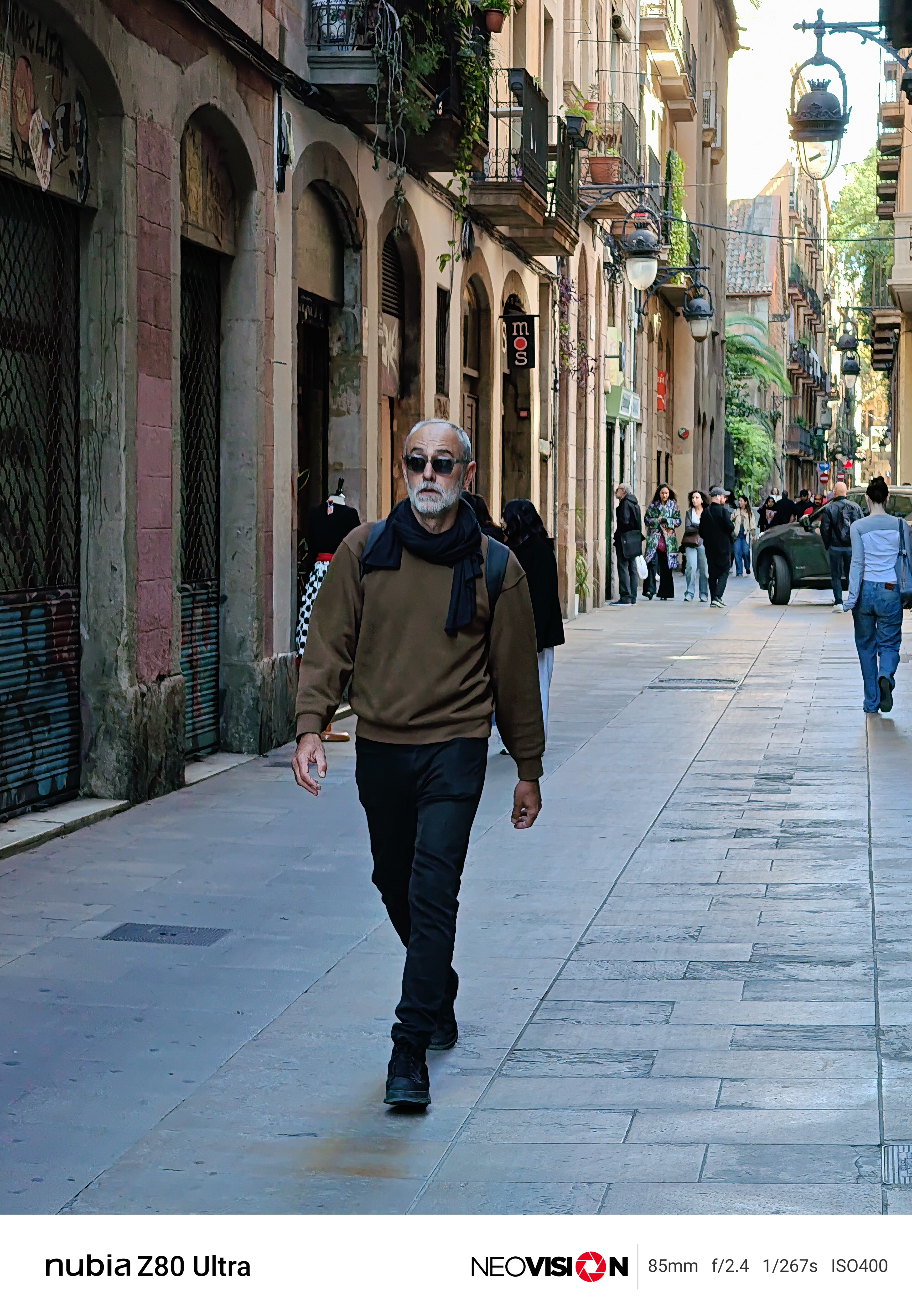
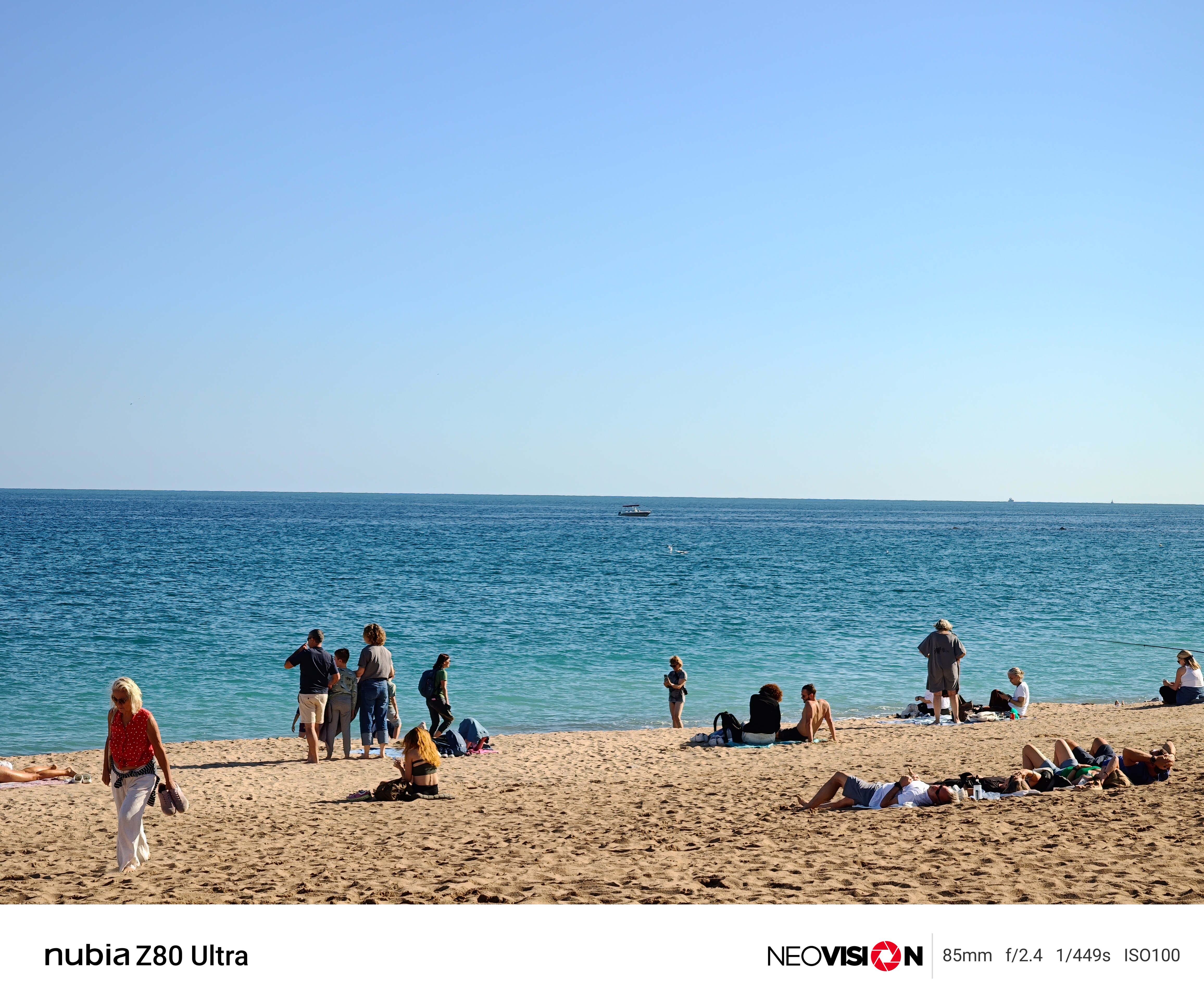




The other problem is the image processing. It's very contrasty and highly sharpened by default, which can look great in the right conditions, but it can also ruin images. This phone doesn't have the level of consistency that we've come to expect from top-tier flagships, but when it hits, it can look magnificent.
Thankfully, you can shoot RAW if you enter the Pro mode, so you can handle all the processing yourself, if you prefer. There's also a range of filters with iPhone-inspired tone controls, so there are plenty of options if you want to change up the look.
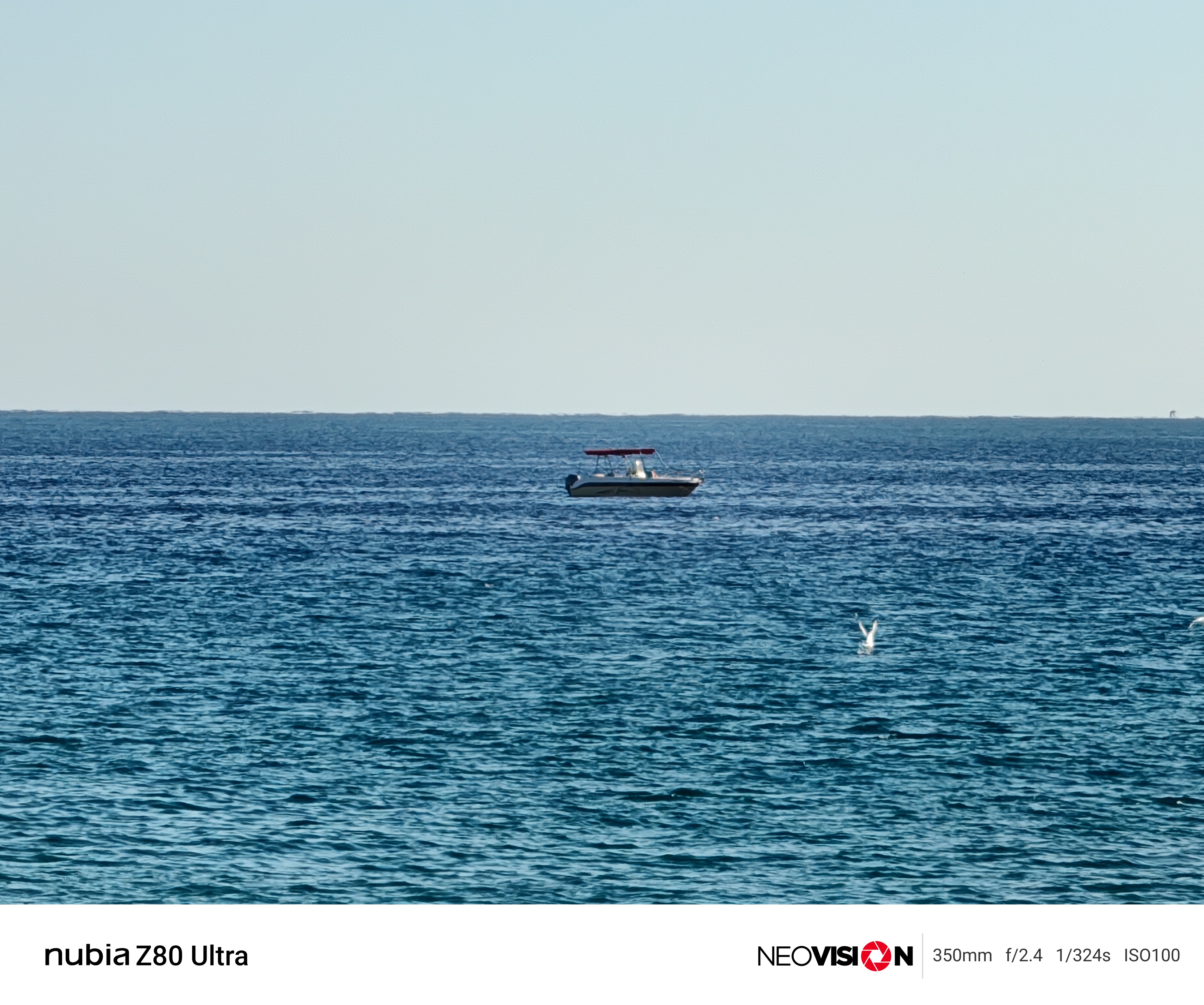


Above: testing the AI-assisted superzoom

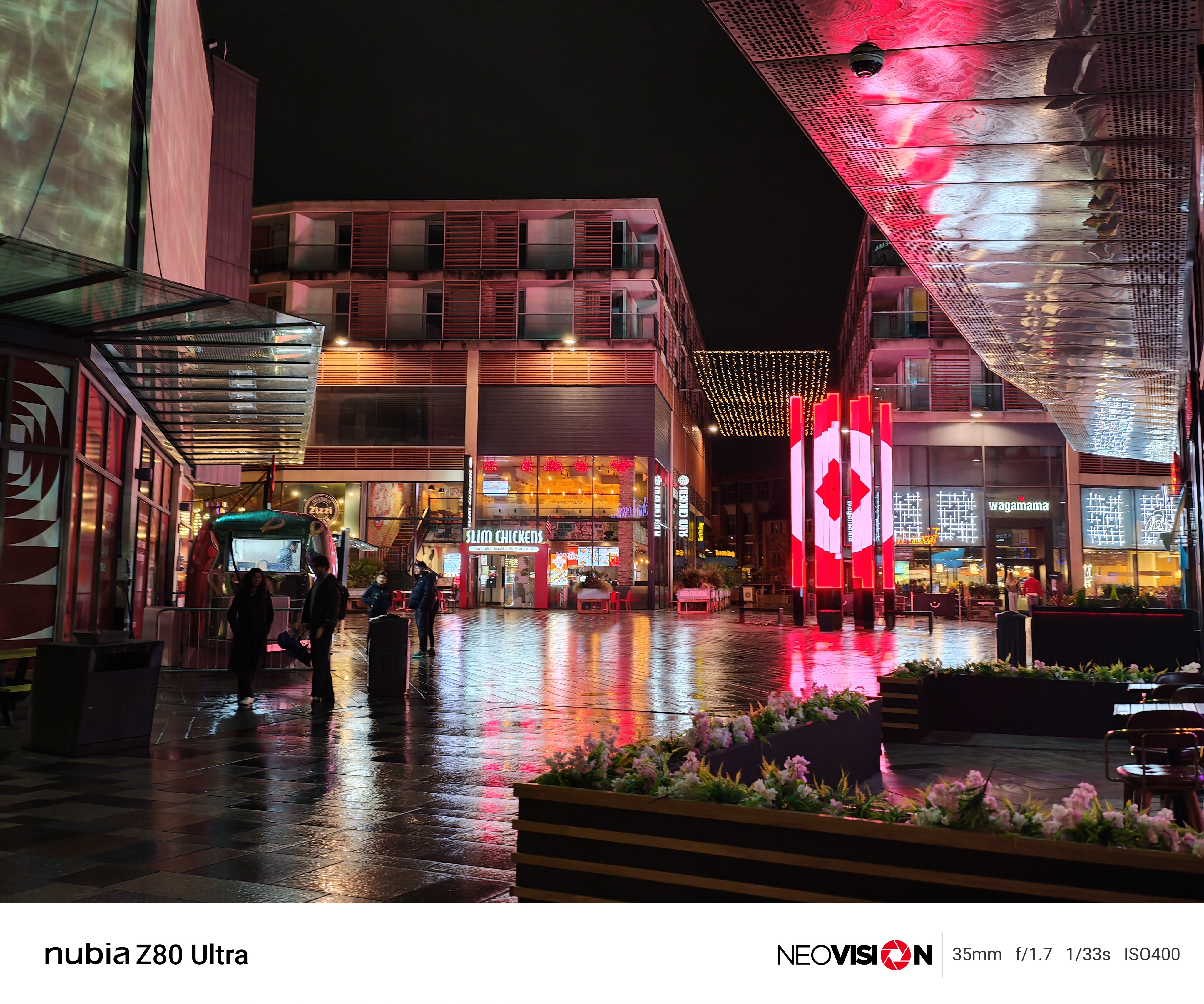
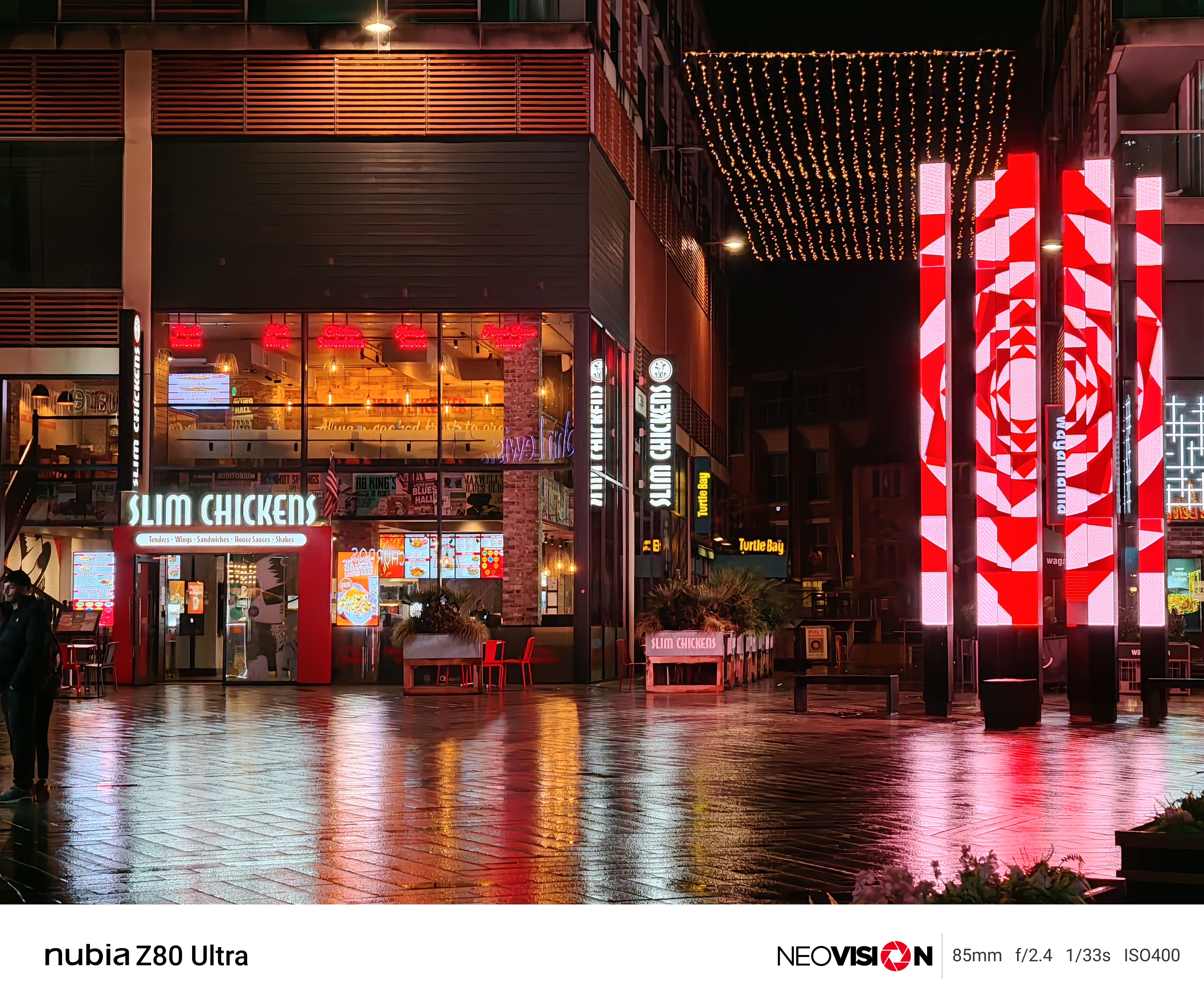
Above: here's how the Z80 Ultra's cameras perform at night
When it comes to video shooting, it's a bit of a mixed bag. You can shoot at up to 4K 120fps on all three rear lenses, which is a true rarity in this price range, and very handy for some cinematic slow-motion shots. You can even shoot at 8K 30fps on the main camera, but I'm not convinced anyone needs to.
Where it falls apart is with the stabilisation. For some reason, EIS is off by default, which means the footage is very shaky, especially on the ultrawide (which seems to lack OIS). Turning on "Anti-Shake Mode" makes things look much better, but if you switch lenses while recording, it just digitally crops in, rather than actually switching to the next camera.
This makes shooting with the Z80 Ultra very frustrating, as when you're using Anti-Shake, you'll need to think about which lens you want to shoot with before hitting record.
Nubia really needs to rework the video mode to make it more user-friendly, because once everything is set up correctly, the footage looks great. But, by default, you're going to end up with some disappointingly shaky shots.
Nubia Z80 Ultra: Phone Performance
The Nubia Z80 Ultra is powered by one of the most powerful chips on the market, the Qualcomm Snapdragon 8 Elite Gen 5. If you're not familiar, all you need to know is that this phone is an absolute rocket.
I've already mentioned that this phone shares some similarities with the Redmagic gaming devices, and that's most evident in the software. It has all the same in-depth gaming customisation options, from overclocking and notification blocking, to super advanced features, like the ability to play landscape games in portrait mode or use AI to automatically pick up items.
The software optimisations and extremely powerful hardware, combined with the lovely notch-free display, make this one of the best gaming handsets around - the fact that it has decent cameras only sweetens the deal. It runs the most demanding games at maximum settings without breaking a sweat.
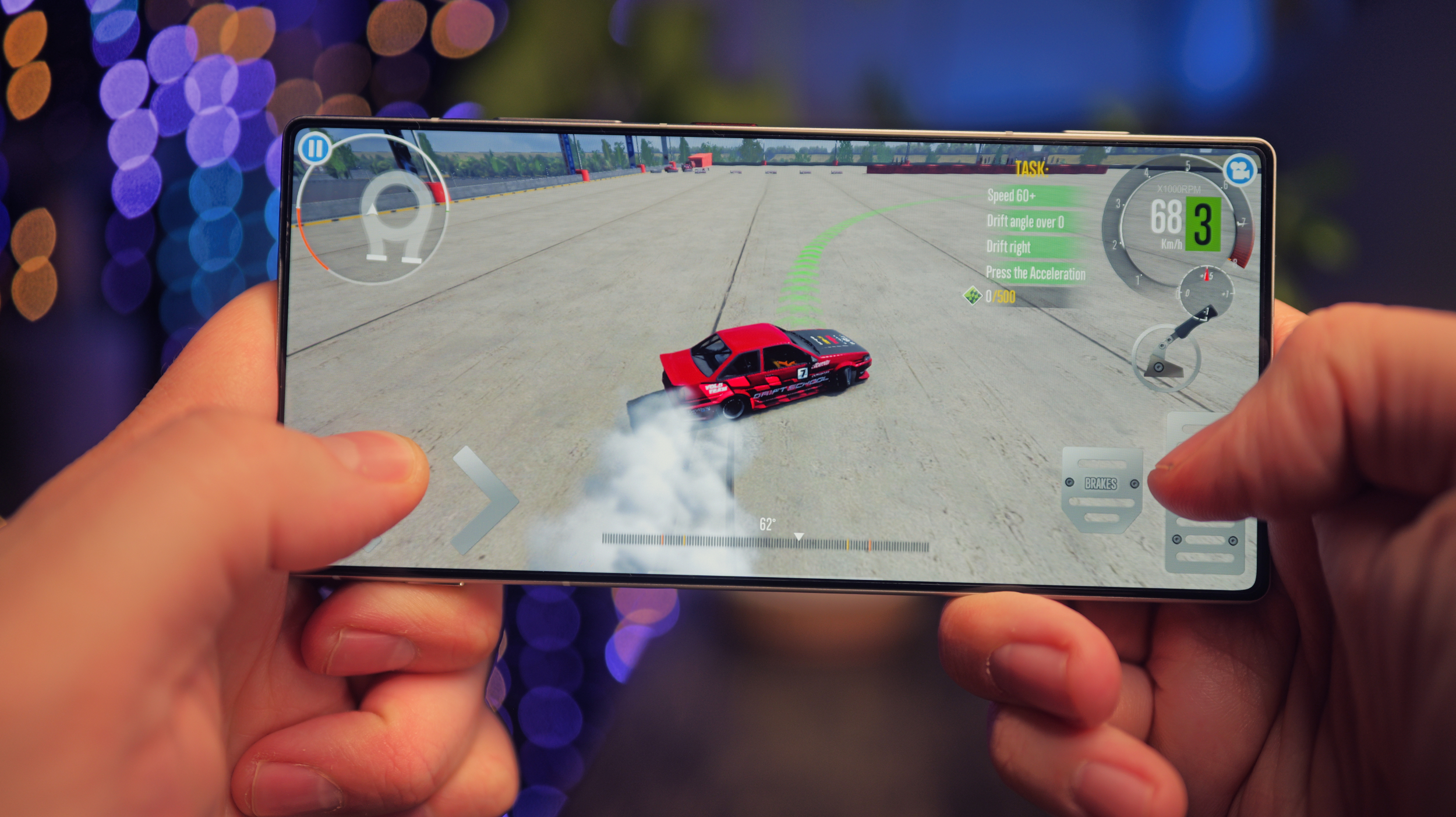

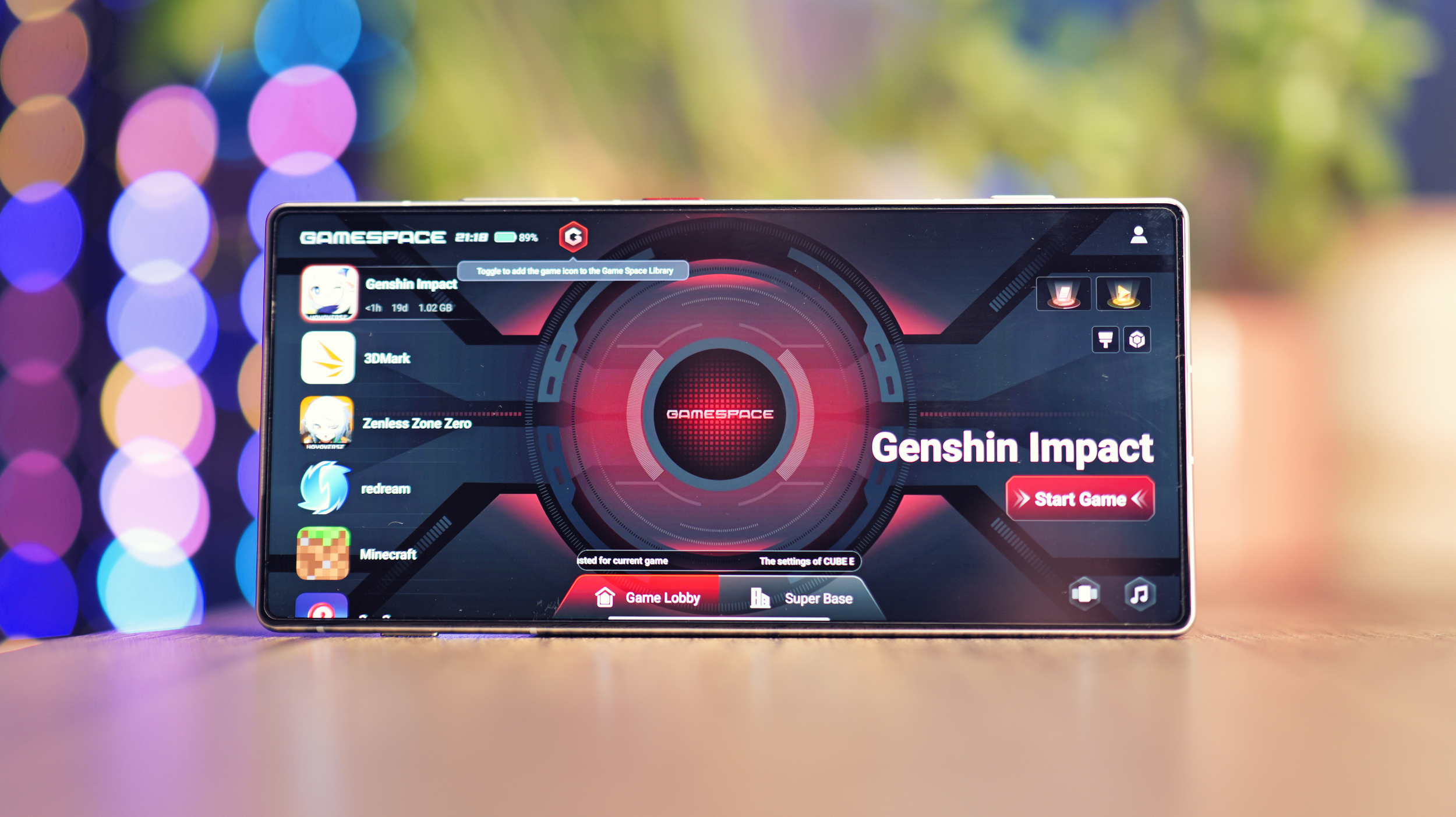
Outside of gaming, the Nubia Z80 Ultra's software is a little hit and miss. It runs well enough, and I didn't encounter too many bugs, but it's not my favourite OS aesthetically. It lacks some polish compared to the competition, and you'll often encounter clunky translations or the occasional Chinese character. It's not hard to live with, but it cheapens the feel of an otherwise premium phone.
What bugged me the most was that the phone doesn't seem to support Circle to Search, and you don't get the usual Google Discover screen when you swipe right on the home screen. Instead, you get Nubia's Z-Board, which is filled with spammy app recommendations and clickbait news. Thankfully, the Z-Board screen can be turned off in Settings.
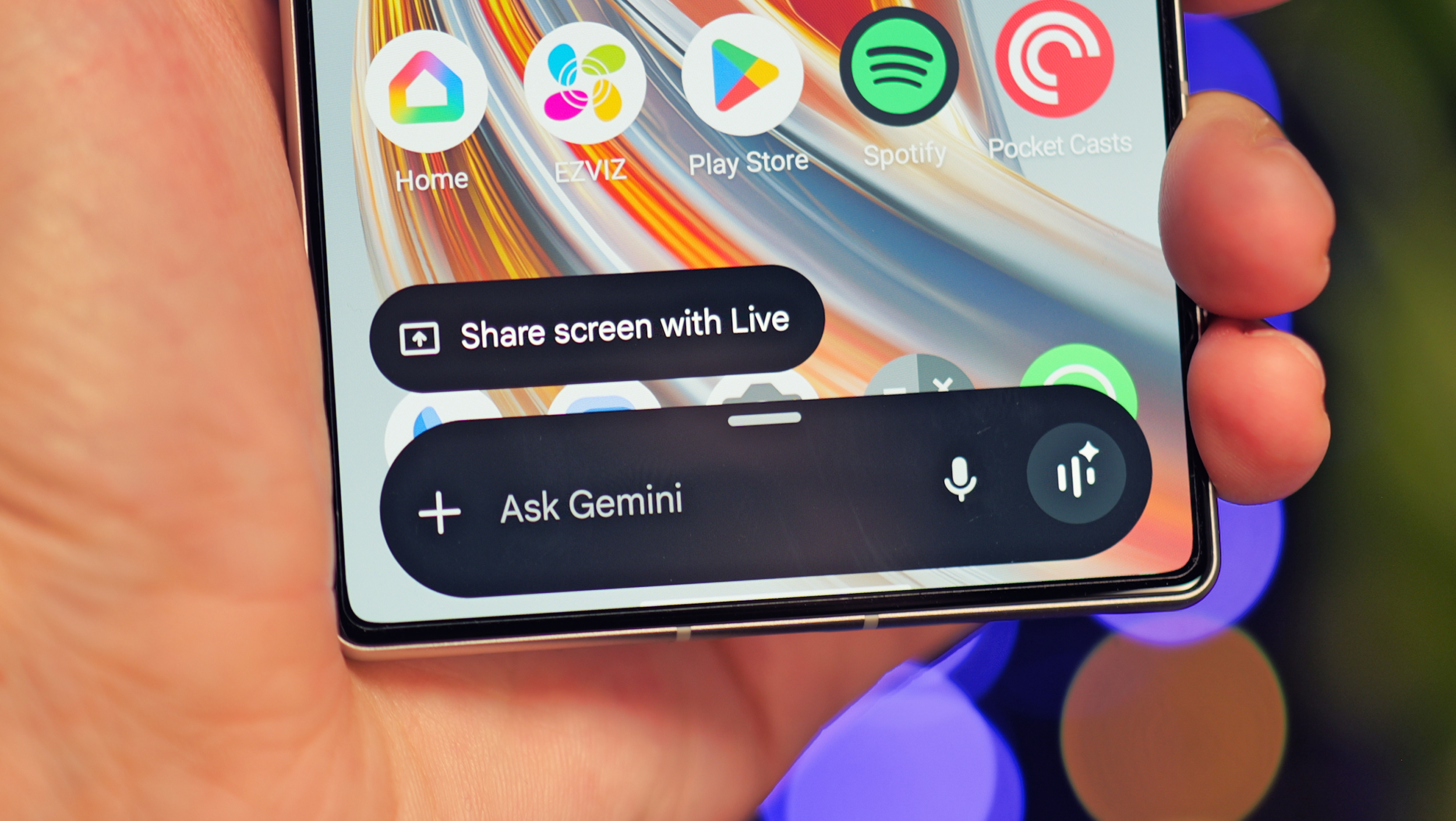
With that all said, I found the Nubia Z80 Ultra easy to move into. Most features function similarly to your average Android handset, and there's some pretty deep integration with Google services. The default gallery app is Google Photos, for instance, and Gemini is the default assistant.
The Nubia Z80 Ultra has a gigantic 7200 mAh battery, one of the largest I've used other than the Oppo Find X9 Pro. As you might expect, this results in phenomenal battery life, and I often found myself going for two days on a charge. Of course, with lots of gaming and camera use, the lifespan will shorten.
It charges super quick, too, whether you opt to use a wire or a wireless charging pad. In either case, it supports speeds of up to 80W, which is enough to get you from flat to full in under an hour. Sadly, there's no wall adapter included in the box, just a cable, but finding a compatible 80W brick shouldn't be too hard. Finding an 80W wireless charger, on the other hand, might prove more challenging.
One of the biggest downsides, compared to a mainstream handset, is probably the software support terms. Nubia says, "The device will receive software support for up to three years, including one major Android upgrade. Additional firmware updates and optimisations will also be rolled out based on market demand".
It's a bit of a wishy-washy promise. You might get three years of updates, or you might just get one Android update. It's a long way behind the likes of Apple and Samsung, which promise 7 years of updates on their flagship models, but perhaps the savings are a worthy tradeoff.

Nubia Z80 Ultra: Verdict
The Nubia Z80 Ultra is astonishingly good value. It's amazing that just $649 / £579 can get you the latest Snapdragon chip, a huge battery, speedy wired and wireless charging, and such good camera specifications.
However, it's important to consider the downsides, too. The software is a bit rough around the edges, and the support terms are unimpressive. Images from the selfie camera look awful, and the image processing as a whole is very hit and miss.
That said, if you're equal parts gamer and photographer, no one is coming close to offering you this much. Especially considering the price. For the right person, this phone is a great buy.
Alternatives
The Xiaomi 15T Pro is one of the only other phones in this price range to offer 4K 120fps video recording. It also offers better software, excellent image processing, and very decent gaming performance. The ultrawide camera is much worse, though.
Read the full Xiaomi 15T Pro review
The Honor Magic 400 is another flagship-killer device at a similar price point. This one has more of a focus on AI features, and could be the way to go if you're looking for a productivity boost, but the cameras and gaming prowess are nothing to sniff at, either.
Read the full Honor 400 Pro review

Luke is a freelance tech journalist who has been working in consumer electronics for over a decade. His specialties include cameras, drones, computing, VR, and smartphones. Previously Features Editor at Pocket-lint, Luke can now be found contributing reviews and features to a variety of tech publications, as well as running a YouTube channel called Neon Airship in his spare time.
You must confirm your public display name before commenting
Please logout and then login again, you will then be prompted to enter your display name.



